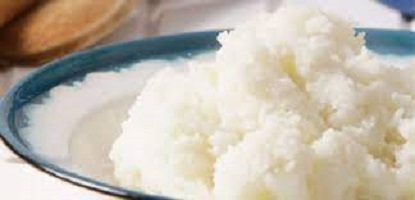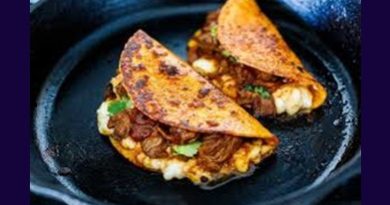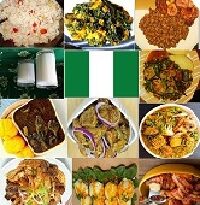Sadza Food (African Cornmeal): How to Make Ugali
Sadza Food (African Cornmeal): How to Make Ugali

It is a generic term for thickened porridge produced from pulverized grains in differing proportions.
Sadza is the most prevalent type of sadza meal. Ie meal is made from white maize (corn). It is a staple in many African countries, particularly in South and East Africa.
Related >>>>
Sadza African food is Zimbabwe’s most popular dish. It’s not unexpected, given that it’s basic food!
Sadza nenyama nemuriwo (pap, meat, and leafy vegetables) is a staple in practically every home, whether for supper or lunch.
It is also one of the first foods given to babies, usually at the age of six months (some do it even earlier).
Other monikers
If you’ve been following along, you’ll notice that I’ve been using Sadza and Ugali interchangeably. This is because they are nearly identical. In South Africa, it’s known as Sadza or pap, while in Tanzania, it’s known as ugali.
In Uganda, it’s called Posho and is also popularly called Nshima and mielie pap.
The generic staple throughout West, East, and Central Africa is FUFU, which is closely related to PAP. In Eritrea and Ethiopia, FUFU is known as GHAAT.
What is Sadza Food?
Sadza, which means “cooked maize meal” in Shona, is a staple cuisine in Zimbabwe. Sadza re makai (sadza in the afternoon) means lunch, and sadza re manner (sadza in the evening) means dinner because Zimbabweans identify sadza with their daily nutrition.
Ugali in East Africa. Sadza in Shona is a type of cooked cornmeal that is a staple cuisine in Zimbabwe and other parts of southern and eastern Africa. This dish is widely prepared in different countries in the region.
Sadza food resembles a thicker porridge in appearance. Sadza, “porridge,” is a thinner version of sadza, occasionally made with peanut butter or margarine and consumed in the mornings.
White maize is used to make the most prevalent type of sadza. In Shona, this maize meal is called hopeful, and in Ndebele, impuphu.
Even though maize is an imported product in Zimbabwe, it has become the primary source of carbohydrates and the most popular meal among the locals.
Locals either buy the meal in stores or make it themselves in a grinding mill using their maize. White maize meal is preferred among Zimbabweans.
They eat yellow maize meal, which is frequently referred to as “Kenya” because it was originally imported from that country, during times of famine or suffering.
Fun Facts
This was the lunch consumed by Usain Bolt before he established a world record, as well as Tom “The Pace” Mills before he became the unofficial fastest man on the planet.
Sadza Food Recipe
When it comes to preparation, South Africans prefer it a little softer, whilst most people in East Africa want it a little thicker.
Sadza is a simple dish to create, but if this is your first time, it may be a little challenging. There’s a danger it’ll end up with little lumps of cornflour in the dish if it’s not properly prepared.
This happens to a lot of first-timers, but one crucial thing to remember is to create the pap before the ugali to avoid lumps.
Pap is a soft porridge produced by boiling corn flour with milk or water.
To make Sadza food, follow these steps:
- Firstly, combine the cornflour and water. Using a ladle, add room temperature water to the cornflour and stir until the flour and water are fully combined.
- Then, make the soft porridge: heat the mixture over medium heat, stirring constantly, until the pap forms, then leave it to boil for a few minutes more.
- After that, make the Sadza: once the porridge is ready, add more cornflour and mix constantly with a ladle until the porridge reaches the appropriate consistency.
What to Eat/Serve with Sadza Food
- Muboora is a wonderful soup made with pork and pumpkin leaves that are served as the first dish in Zimbabwe. The meat and veggies are cooked in fresh cream or peanut butter curry. Sadza is served beside it.
- Furthermore, Sadza is not eaten on its own because it has little to no flavor. It’s frequently accompanied by a relish such as sukuma wiki (collard green/kale relish) or tomato relish.
- Some people like to add milk to make it taste better, especially for breakfast.


